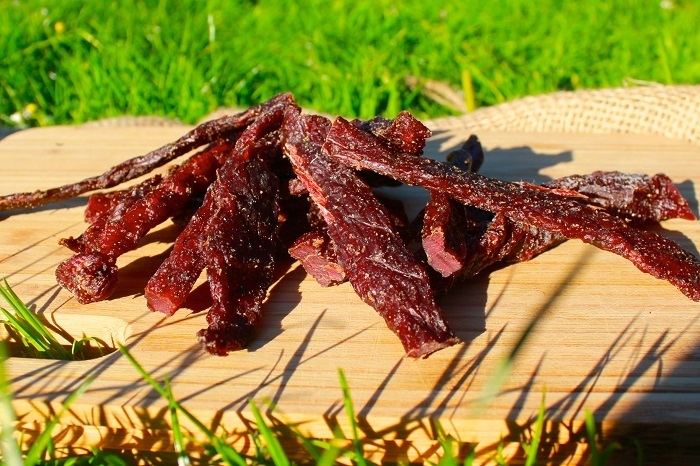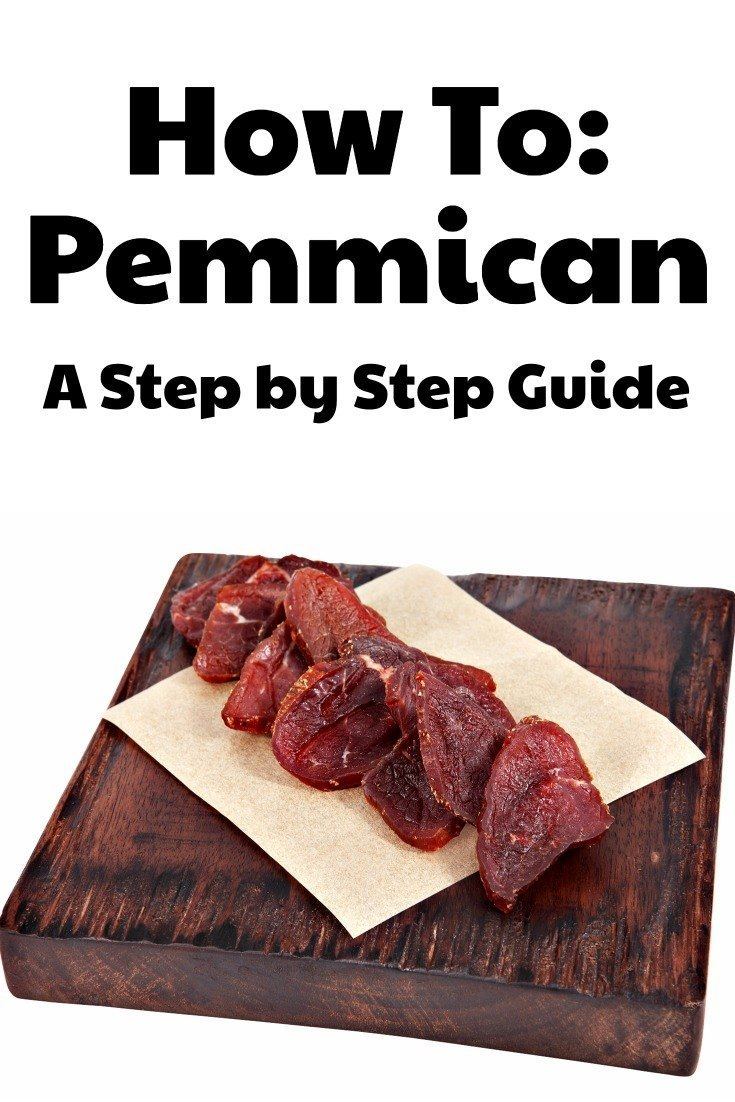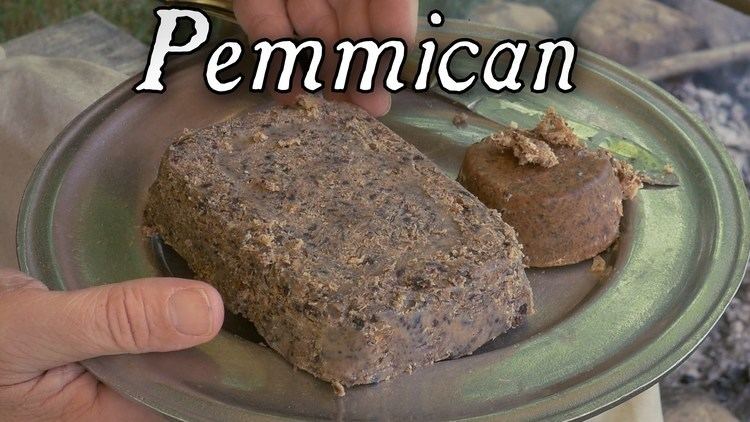 | ||
Similar Hardtack, Bannock, Biltong, Tallow, Dried meat | ||
Pemmican the ultimate survival food
Pemmican is a concentrated mixture of fat and protein used as a nutritious food. It is part of Canadian cuisine. The word comes from the Cree word pimîhkân, which itself is derived from the word pimî, "fat, grease". It was invented by the native peoples of North America.
Contents
- Pemmican the ultimate survival food
- Pemmican the original survival food
- Ingredients
- Traditional preparation
- Serving
- History
- Modern pemmican producers
- References

Pemmican was widely adopted as a high-energy food by Europeans involved in the fur trade and later by Arctic and Antarctic explorers, such as Sir Ernest Henry Shackleton, Fridtjof Nansen, Robert Falcon Scott, and Roald Amundsen.

Pemmican the original survival food
Ingredients

The specific ingredients used for pemmican were usually whatever was available. The meat was often bison, deer, elk, or moose. Fruits such as cranberries and saskatoon berries were sometimes added. Blueberries, cherries, chokeberries, and currants were also used, but almost exclusively in ceremonial and wedding pemmican.
Traditional preparation

Traditionally, pemmican was prepared from the lean meat of large game such as buffalo, elk, deer, or moose. The meat was cut in thin slices and dried, either over a slow fire or in the hot sun, until it was hard and brittle. (About 5 pounds (2,300 g) of meat are required to make 1 pound (450 g) of dried meat suitable for pemmican.) Then it was pounded into very small pieces, almost powder-like in consistency, using stones. The pounded meat was mixed with melted fat in an approximate 1:1 ratio by volume. In some cases, dried fruits, such as blueberries, choke cherries, cranberries, or saskatoon berries, were pounded into powder and then added to the meat/fat mixture. The resulting mixture was then packed into rawhide bags for storage. It can be stored for a maximum of 10 years.

A bag of buffalo pemmican weighing about 90 lb (41 kg) was called a taureau (French for "bull") by the Métis of Red River. These bags of taureaux (lit. "bulls"), when mixed with fat from the udder, were known as taureaux fins, when mixed with bone marrow, as taureaux grand, and when mixed with berries, as taureaux à grains. It generally took the meat of one buffalo to fill a taureau.
Serving

In his notes of 1874, North-West Mounted Police Sergent-Major Sam Steele records three ways of serving pemmican: raw; boiled in a stew called "rubaboo"; or fried, known in the West as a "rechaud":[1]

The pemmican was cooked in two ways in the west; one a stew of pemmican, water, flour and, if they could be secured, wild onions or preserved potatoes. This was called "rubaboo"; the other was called by the plains hunters a "rechaud". It was cooked in a frying pan with onions and potatoes or alone. Some persons ate pemmican raw, but I must say I never had a taste for it that way.
History
The voyageurs of the Canadian fur trade had no time to live off the land during the short season when the lakes and rivers were free of ice. They had to carry their food with them if the distance traveled was too great to be resupplied along the way. A north canoe (canot du nord) with six men and 25 standard 90-pound (41 kg) packs required about four packs of food per 500 miles (800 km). Montreal-based canoemen could be supplied by sea or with locally grown food. Their main food was dried peas or beans, sea biscuit, and salt pork. (Western canoemen called their Montreal-based fellows mangeurs de lard or "pork-eaters".) In the Great Lakes, some maize and wild rice could be obtained locally. By the time trade reached the Winnipeg area, the pemmican trade was developed.
Métis would go southwest onto the prairie in Red River carts, slaughter buffalo, convert it into pemmican, and carry it north to trade at the North West Company posts. For these people on the edge of the prairie, the pemmican trade was as important a source of trade goods as was the beaver trade for the Indians farther north. This trade was a major factor in the emergence of a distinct Métis society. Packs of pemmican would be shipped north and stored at the major fur posts: Fort Alexander, Cumberland House, Île-à-la-Crosse, Fort Garry, Norway House, and Edmonton House. So important was pemmican that, in 1814, governor Miles Macdonell started the Pemmican War with the Métis when he passed the short-lived Pemmican Proclamation, which forbade the export of pemmican from the Red River Colony.
Alexander Mackenzie relied on pemmican on his 1793 expedition across Canada to the Pacific.
North Pole explorer Robert Peary used pemmican on all three of his expeditions, from 1886 to 1909, for both his men and his dogs. In his 1917 book Secrets of Polar Travel, he devoted several pages to the food, stating, "Too much cannot be said of the importance of pemmican to a polar expedition. It is an absolute sine qua non. Without it a sledge-party cannot compact its supplies within a limit of weight to make a serious polar journey successful."
British polar expeditions fed a type of pemmican to their dogs as "sledging rations". Called "Bovril pemmican" or simply "dog pemmican", it was a beef product consisting, by volume, of 2/3 protein and 1/3 fat (i.e., a 2:1 ratio of protein to fat), without carbohydrate. It was later ascertained that although the dogs survived on it, this was not a nutritious and healthy diet for them, being too high in protein. Members of Ernest Shackleton's 1914–1916 expedition to the Antarctic resorted to eating dog pemmican when they were stranded on ice for the winter.
During the Second Boer War (1899–1902), British troops were given an iron ration made of four ounces of pemmican and four ounces of chocolate and sugar. The pemmican would keep in perfect condition for decades. It was considered much superior to biltong, a form of cured game meats commonly used in Africa. This iron ration was prepared in two small tins (soldered together) which were fastened inside the soldiers' belts. It was the last ration used and it was used only as a last resort—when ordered by the commanding officer. A man could march on this for 36 hours before he began to drop from hunger.
American adventurer Frederick Russell Burnham, while serving as Chief of Scouts for the British Army in South Africa, required pemmican to be carried by every scout.
A 1945 scientific study of Pemmican criticized using it exclusively as a survival food because of the low levels of certain vitamins.
Modern pemmican producers
Modern protein bars, "pemmican-inspired"
Modern food brands named "pemmican"
